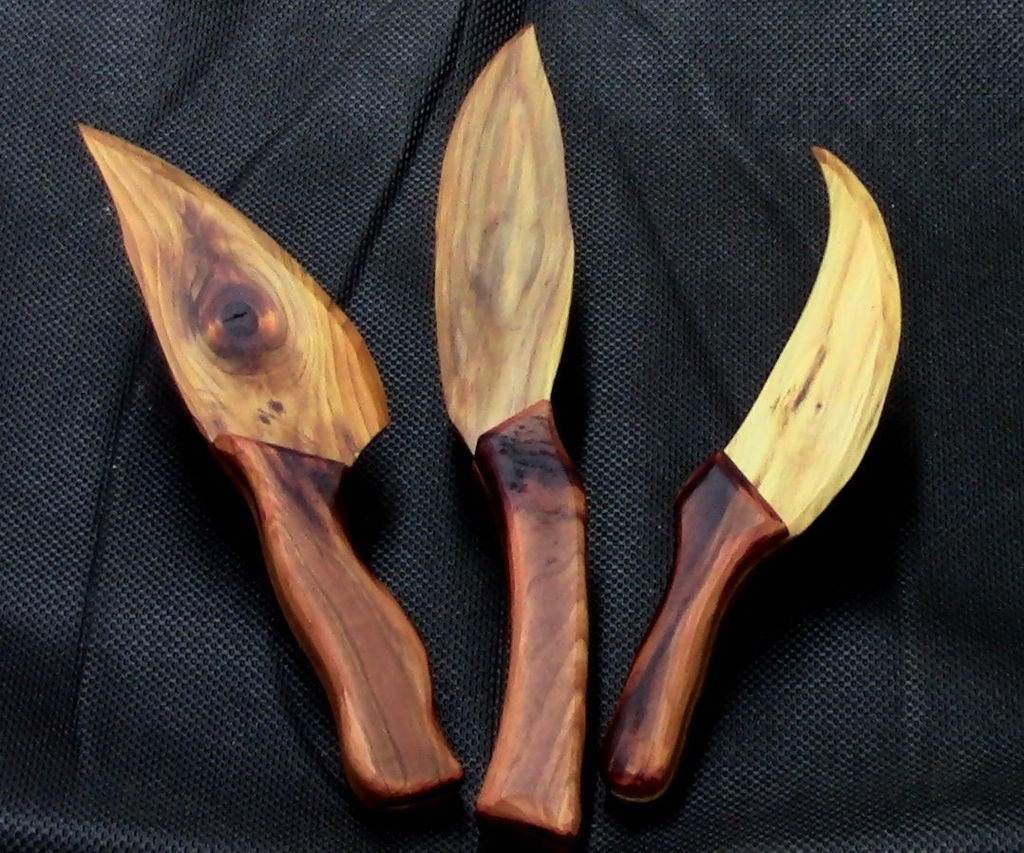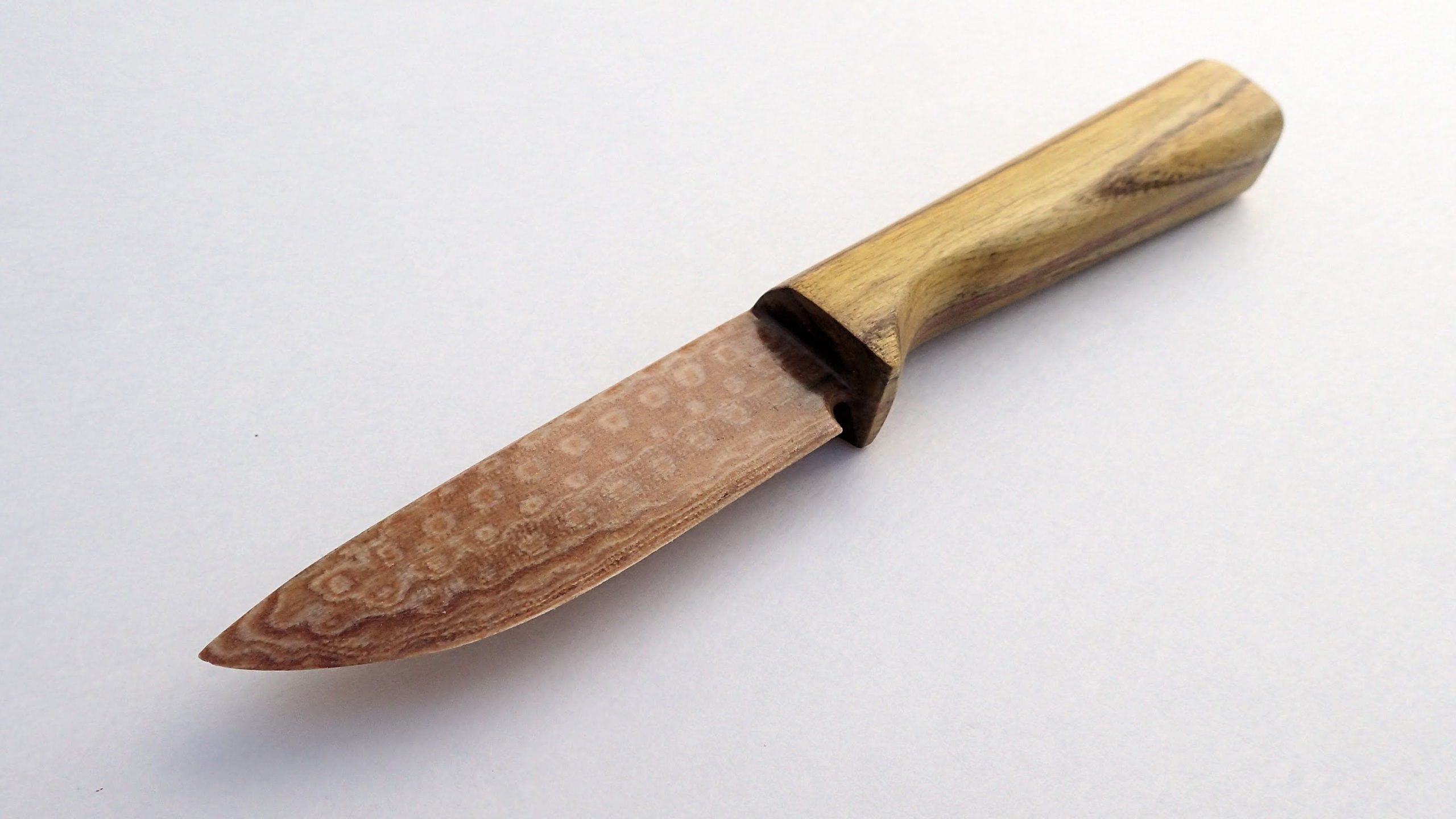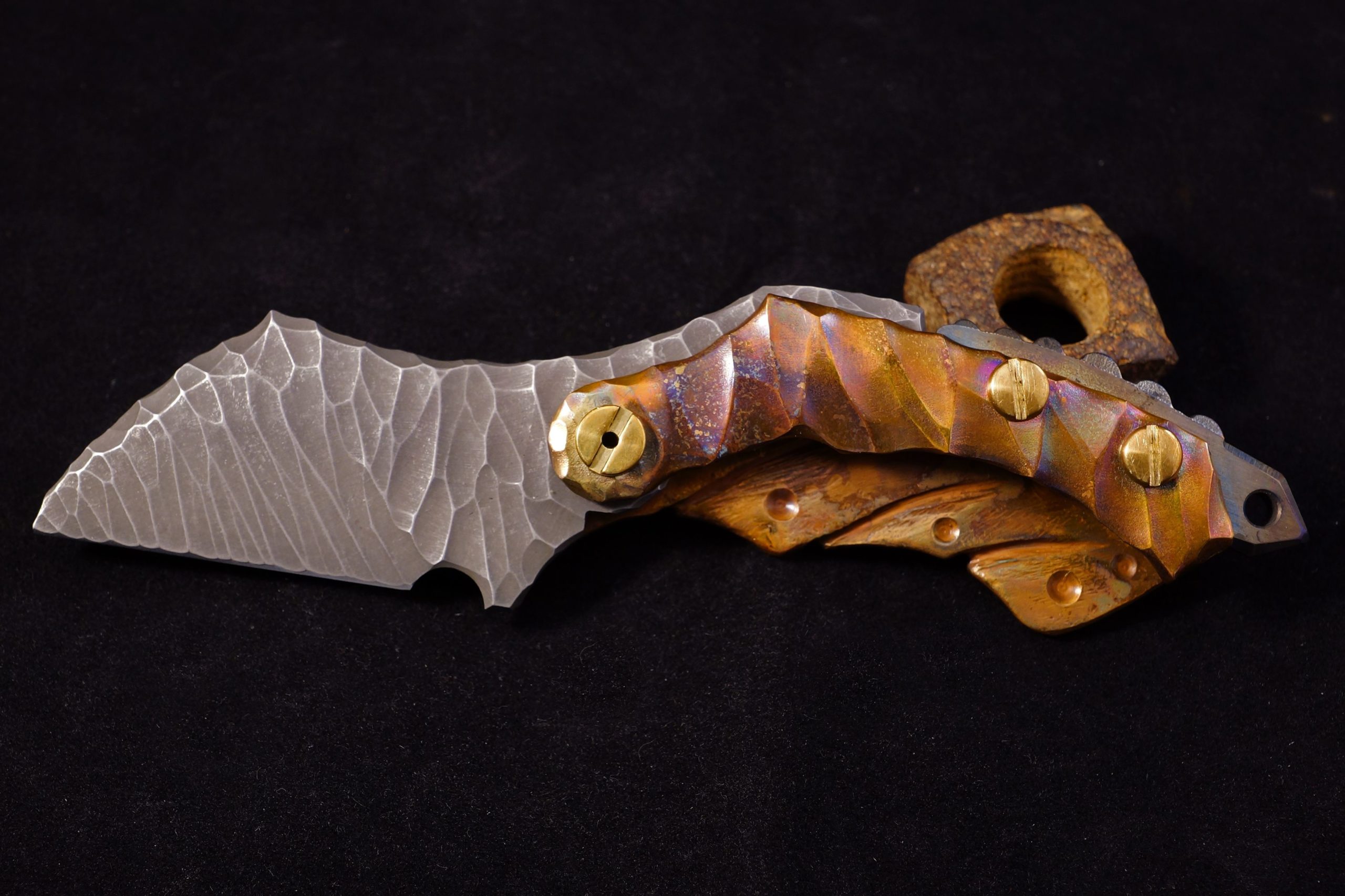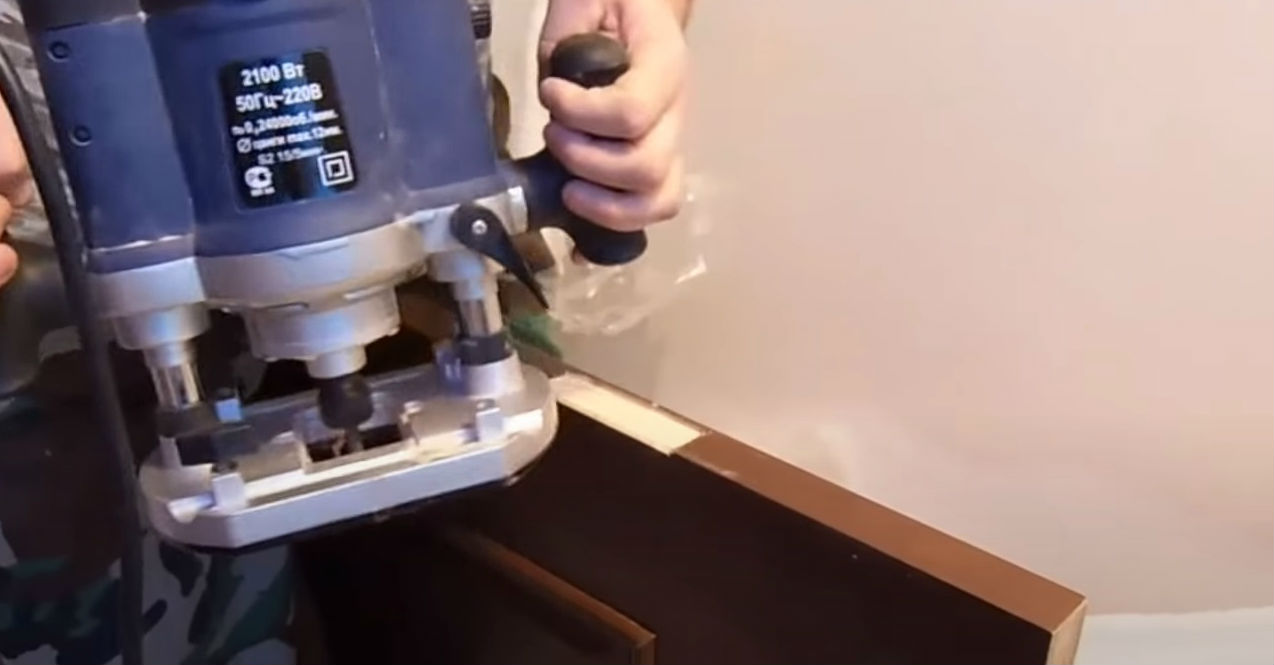How to make a knife from wood
A common knife today is made of steel. Once upon a time in the Stone Age, when our ancestors just climbed out of the trees (as Darwin claims), they were not familiar with metalworking. In those days, the materials for tools were stone, bone, burnt wood... Today, wooden knives are exotic, and they find limited use. What kind of craft it is and how to make such a craft - you will find out from the article.

The content of the article
Areas of application of wooden knives
If someone starts to claim that in the wild it is possible make a wooden knife, in the absence of steel, - in front of you is probably Baron Munghausen. Let's figure it out - harder material is used to process wood. For example, steel. It turns out that you have something to use to process wood, but you don’t have a knife?
If speak about souvenir version of the product - this is closer to the truth. You can make a truly exclusive thing from wood, and the manufacturing process is simpler and faster than metalworking.
What about practical applications? I have good news - yes, with the proper choice of material and good sharpening, you can use such a knife for slicing cheese, boiled vegetables or minced meat. It is clear that they cannot cut up a carcass.
The guys who do hand-to-hand combat know best what a wooden knife is for. model of a weapon for practicing techniques. Now let's talk about making this “toy”.
Tools and materials

In fact, you don't need much:
- oak or ash board with a thickness of at least 6-8 mm;
- jigsaw;
- belt sander with coarse sandpaper;
- a drill with drills, if you plan to drill holes in the product;
- several files or needle files for fine work;
- sandpaper with various grains;
- mineral oil or other impregnation;
- paper, cardboard, pencil, scissors or a stationery knife for making a template.
Do I need to make a template?
If you make a knife anyhow, then, by and large, sample there's no point here. But the results will most likely be worse than with a thorough approach to the matter. The easiest option is to take ready-made drawing from the Internet, print on thick paper. Then, having cut out the contours, stick them on a wooden blank - that’s the whole template.
Knife making process
Using a jigsaw, we cut out the workpiece along the resulting contour. If you plan to use the tool for its intended purpose, do not complicate your life with an abundance of details. Make the handle and blade part from one piece of wood. Believe me no connection, be it glue or dowels, can compare in strength to a monolith.

The cut workpiece is finished using a grinder and files. Using the same grinder it is quite possible to make a cutting edge. Don’t delude yourself about the sharpening angle - if tool steel (and even Damascus) becomes dull during use, then what can we say about wood. Therefore The sharpening angle of a wooden knife is twenty degrees - the ultimate dream.
Finishing and processing
Using fine-grit sandpaper you can achieve good results. Small in my understanding is everything that is smaller P240 according to labeling.By gradually changing the sandpaper, the required quality of the blade surface is achieved.
As for processing, then I absolutely do not recommend varnishing the product, even acrylic varnish, not to mention nitrocellulose or polyurethane. Use mineral oil, or if you don’t have it, heat the olive oil thoroughly and saturate the knife with it.
If we are talking about a weapon model for training, there is no need to sharpen it - just sand it. Such a knife can be varnished, but it is better to paint it metallic for greater resemblance to a real weapon. The thickness of such a product should be at least 8-10 millimeters, otherwise it won’t last long, just a few training sessions.
In addition to oak, larch or ash, a very good knife would be made from backout - iron wood. It is very hard and dense (up to 1.4 g/cm3). And like any worthwhile thing, yes, the backout sinks in the water. Its main drawback is that it is very expensive, and it is not so easy to get iron wood here, because... it grows in distant Argentina.





